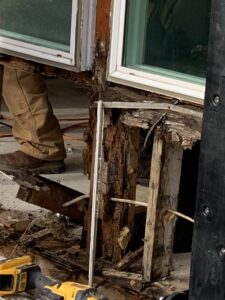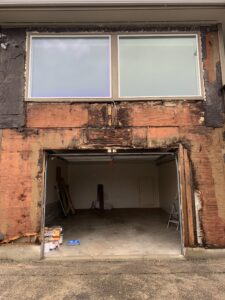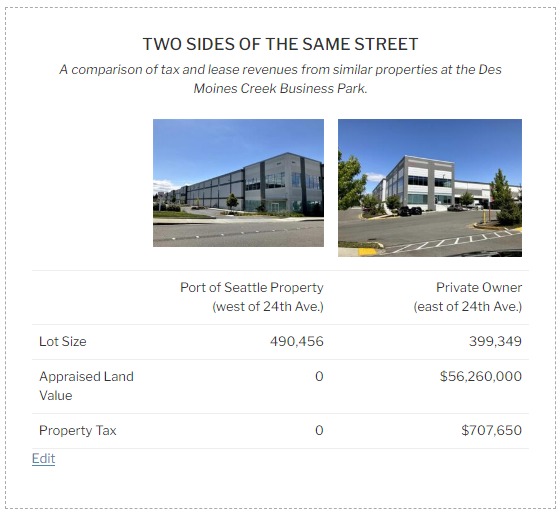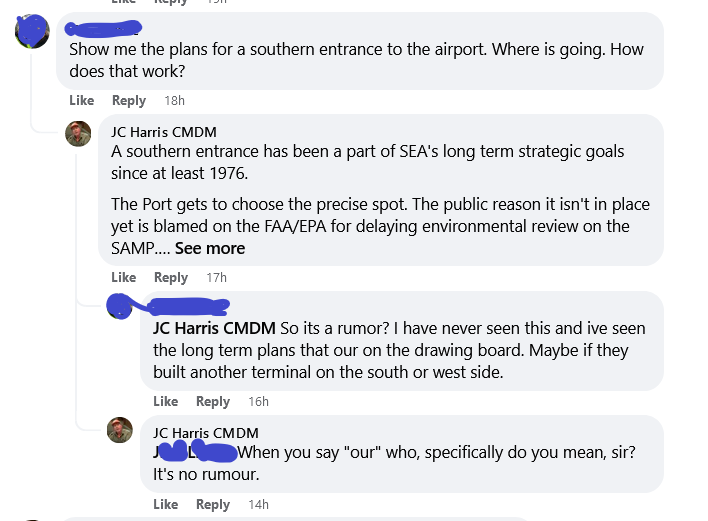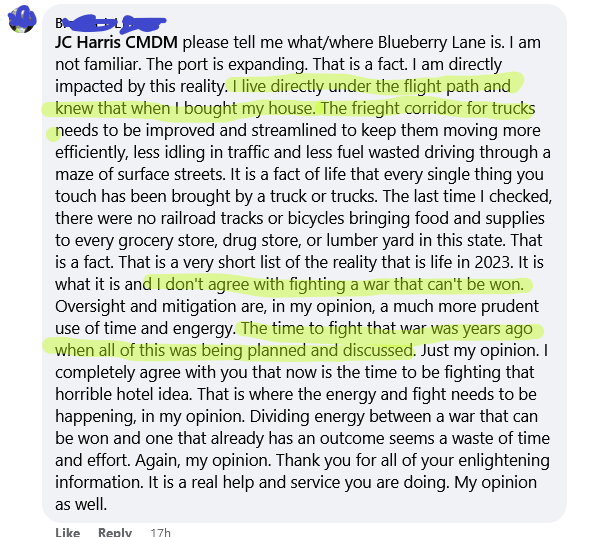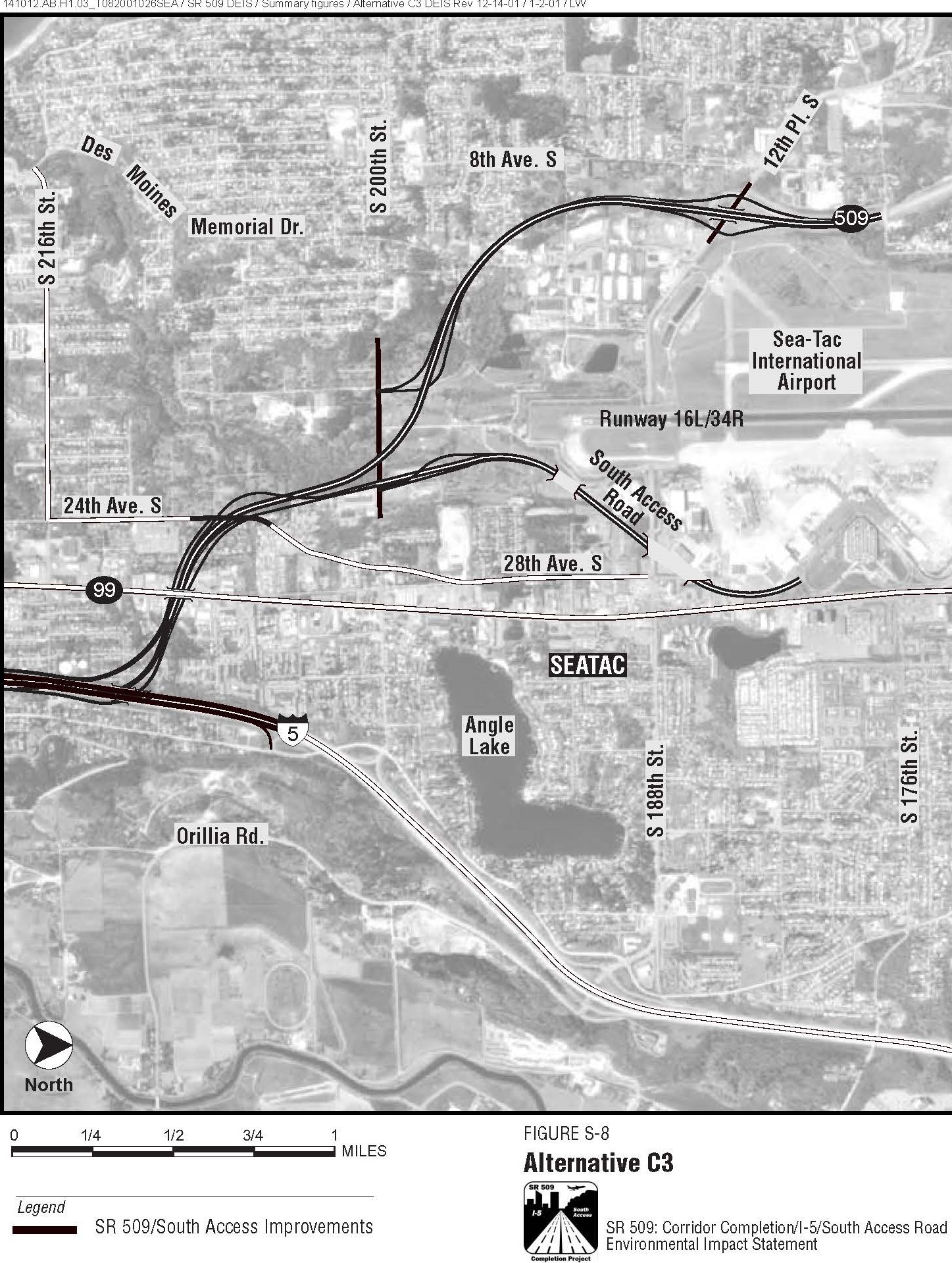Representative Smith. I am writing to provide our input as to what residents of Sea-Tac Airport need to address the impacts of commercial aviation. Although these four suggestions are specific to our community, they apply to all major airport communities. As we have always said: Solving for Sea-Tac, solves for all airports. That was the original intent of the Sea-Tac Communities Plan and those people knew what they were talking about.
#1 Port Package bad faith. It’s not ‘foggy windows’.
This is just one example of what happens when a Port Package is improperly installed. In this case, the window openings were poorly sized and covered up with lots of caulk. Water gets behind the frame and over time, percolates through the wood to the structural members, causing the entire wall to deform. We’ve seen worse cases where the deformation on one wall starts to pull on another wall.
This is not from ‘years ago’. This is a fairly recent version in one of the very few multi-family neighbourhoods in Des Moines. Sooner or later all the homes in that area will succumb.
The Port is willing to discuss product replacement, but has stated, on camera, that there were no bad installs. I don’t know why they would say that, but one possible reason is that the hold harmless clause of the Avigation Easements, does not apply to improper inspection, which is required by both the FAA grant as well as local building code.
Solution: We need funding to help homeowners with all kinds of Port Package problems; not merely ‘window replacement’.
#2 Revenue Sharing, not economic development grants
While the City was ostensibly fighting the Third Runway, it was also engaging in negotiations to actually further airport expansion–based on some vague promises of ‘growth’ and ‘jobs’.
The land for the Des Moines Creek Business Park was the southern portion of the FAA Noise Lands I’ve mentioned before (Section 163). The northern portion of that buffer being what became North Sea-Tac Park. (The west side was first going to be re-zoned for a Boeing Headquarters and when that fell through it paved the way –no pun intended–for the Third Runway.)
 The DMCBP was being discussed as some form of ‘economic windfall’ for Des Moines. But since ownership of that FAA purchased land was retained by the Port and because the Port pays no property tax it is actually a net loss for Des Moines. And that is just one of nine parcels within the City of Des Moines jurisdiction. The total lost property tax opportunity for the DMCBP is over $8.5 million annually. To add insult to injury, the lease revenue the Port receives for those properties is another $1,000,000. Surely, that was not the FAA’s original intent. And it was certainly not the intent of the STCP.
The DMCBP was being discussed as some form of ‘economic windfall’ for Des Moines. But since ownership of that FAA purchased land was retained by the Port and because the Port pays no property tax it is actually a net loss for Des Moines. And that is just one of nine parcels within the City of Des Moines jurisdiction. The total lost property tax opportunity for the DMCBP is over $8.5 million annually. To add insult to injury, the lease revenue the Port receives for those properties is another $1,000,000. Surely, that was not the FAA’s original intent. And it was certainly not the intent of the STCP.
More than anything, Cities and schools need guaranteed, ongoing structural revenue, not one-time grants (which are usually funded with our own property tax levy, by the way.)
Solution: A portion of any economic benefit obtained by an airport owner, using land purchased with FAA money, should be set aside annually for the taxing jurisdictions.
#3 Impact Fees: SR-509
As Rep. Smith knows, the area has been wanting some final connections between 99, 167 and I-5 since the 1970’s. Less well advertised is the fact that the highest purpose of SR-509 was always to connect the Port with the airport and then onto I-5 (and later 167 and the Kent Valley.) The key piece has been, since the STCP in 1976, a southern access point to Sea-Tac Airport.
The EIS for the stretch of SR-509 connecting to the airport was actually approved by the Dept. Of Highways and SEPA/NEPA in 2003/2005.
Both WSDOT, the Port, and the Cities have played hide-the-ball on this knowing well the public opposition. The recent WSDOT Open Houses do not mention the southern access or even provide images of the area in Des Moines along 200th. And no one even mentions the impact to neighbourhoods like Blueberry Lane, which do not currently provide even a noise wall.
So, you literally cannot get residents to believe it. Here is an exchange on social media from a person who works at the airport.
You can show them the renderings from the EIS and they won’t believe it. You can show them the EIS, which is titled “SR 509: Corridor Completion/I-5/South Access Road” and still they may not believe it. Or, they acknowledge it and then shrug, basically saying “that’s progress” and resistance is futile.
Solution: We need guaranteed, ongoing impact fees. Just like many cities negotiate for construction of ball parks and factories.
#4 Environmental Science: We need a Lab, not another study
When the STCP was negotiated, the plan was for two monitoring networks, one for noise and one for air quality–both specifically to target aviation impacts. The noise network was built. The AQM network was not. If you look at the State Dept. of Ecology they have a complete ongoing underwater pollution monitoring networks in Puget Sound, They also have a very nice ongoing roadway emissions network along all the main highway corridors.
This year we may get one, ONE air quality monitor in proximity to Sea-Tac Airport. And it may (or may not) have funding for ultrafine particulates.
Puget Sound Clean Air (an arm of the EPA) advocates strongly that only a single monitor is necessary because aviation emissions are a much smaller percentage of regional emissions than, say, wood smoke. Plus, given the fact that they don’t seem to generate as much PM2.5, that makes such spending even less worthy.
Here is the truly insidious part:
Exactly the same arguments were used with regard to lead back in the twentieth century. You could not get funding to properly measure ongoing lead exposure (except for one-off studies) because the amount was considered so small as to be irrelevant. Also, many decision makers refused to push hard on the issue because ‘lead’ was considered indispensable to the world economy. There was no point in studying it because the economic benefits dwarfed any health or environmental harms.
I have spoken to many scientists in the field who really, Really, REALLY, want that complete, ongoing, aviation emissions monitoring network; at least 4-6 permanent fixed stations. Off the record (always off the record) they will tell you that this is the only way to get answers to so many of the essential questions necessary to achieve a proper understanding of aviation emissions. Spatial dynamics; qualitative analysis; cumulative exposure. As was found to be the case with lead, the numbers are so small that the same assumptions researchers now use for larger particulates may simply not apply. You do not know what you do not know.
We are justifiably proud of researchers like UWDEOHS for their innovative use of mobile monitoring‘. The uncomfortable truth is that everyone in the field would much prefer a complete fixed site network. Developing this approach and achieving credibility throughout the scientific community has been murderously difficulty because, wait for it, fixed site monitoring is better. It just is. The mobile monitoring is largely a work-around, a make-do. It has some good points, but if there were already a fixed-site network in place, that would be the primary tool for studying aviation emissions and we would now have the answers we need to get to regulatory authority.
But, they will never say that out loud. NEVER. And the reason is exactly the same reason researchers were reluctant to ask for grant funding for lead back in the 20’s, 30’s, 40’s, 50’s and even up to the ’60’s. Because they knew they’d never get it.
Because UFPs and aviation emissions are not regulated, you can’t study them longitudinally. And because you can’t study them longitudinally, you cannot get to regulatory authority.
The reason the Port went along with noise monitors was because they were created before this Kafkaesque regulatory environment came on-line. And now, thanks to ANCA, they present no risk.
But air quality does present a risk to the aviation industry. You can’t ask for money to pursue the science unless it is already regulated. And even asking for money to study it is risky.
Local and state electeds, health professionals and scientists confine their asks to what they already know they can get funding for. And what they can get funding for (asthma studies, more filters) do not move the ball down the field towards regulatory authority–or at least so slowly it presents no threat to the industry.
We know what we need. We always did. It is not a three year grant. We need what was suggested with the STCP in 1976–a complete fixed-site air quality monitoring network of at least four sites. The cost is basically $200,000 per site for the hardware. You then have the one-time municipal costs of right-of-way. And then an annual cost of $50,000 or so to do the analysis and reporting.
Think of novel research, like astronomy or fusion. You can continue to fund multiple places all studying things with the same limitations and getting mostly the same results we already have. Instead, those scientists decided to pool their resources to create one game-changer; a telescope or a lab with the resources necessary to study the topic properly. And Sea-Tac Airport is the logical choice.
Solution: $2,500,000 to create a permanent lab; a perpetual fixed-site monitoring network which will provide a platform for scientists across the world to study aviation emissions however they want and forever. That is what is needed to obtain the answers that the scientific community and health professionals have needed for fifty years.
